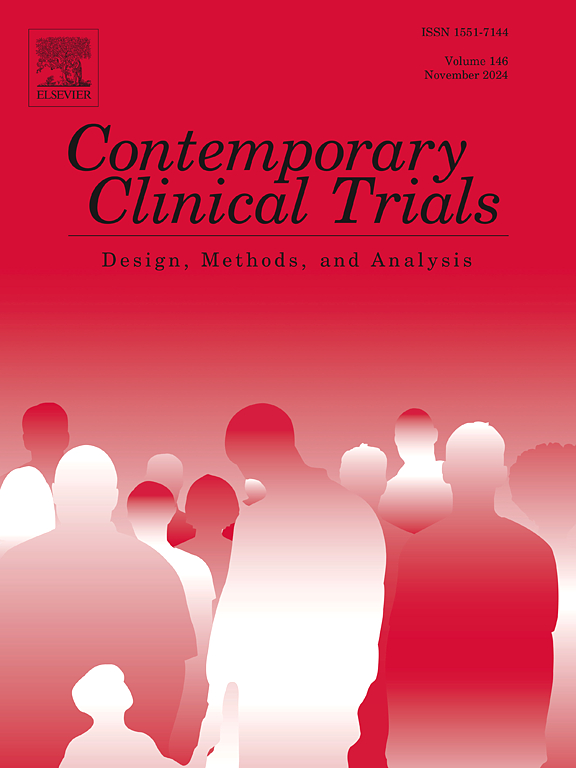Adjusting confidence intervals under covariate-adaptive randomization in non-inferiority and equivalence trials
IF 1.9
3区 医学
Q3 MEDICINE, RESEARCH & EXPERIMENTAL
引用次数: 0
Abstract
Regulatory authorities guide the use of permutation tests or randomization tests so as not to decrease the Type I error rate when applying covariate-adaptive randomization in randomized clinical trials. For non-inferiority and equivalence trials, this paper derives adjusted confidence intervals using permutation and randomization methods, thus controlling the Type I error to be much closer to the pre-specified nominal significance level. We consider three variable types for the outcome of interest, namely normal, binary, and time-to-event variables for the adjusted confidence intervals. For normal variables, we show that the Type I error for the adjusted confidence interval holds the nominal significance level. However, we highlight a unique theoretical challenge for non-inferiority and equivalence trials: binary and time-to-event variables may not hold the nominal significance level when the model parameters are estimated by models that diverge from the data-generating model under the null hypothesis. To clarify these features, we present simulation results and evaluate the performance of the adjusted confidence intervals.
In conclusion, this paper highlights that while normal variables can control Type I errors in non-inferiority and equivalence trials, binary and time-to-event variables cannot control Type I errors unless the model is correctly specified.
在非劣效性和等效试验中调整协变量自适应随机化的置信区间。
监管机构指导使用排列试验或随机化试验,以便在随机临床试验中应用协变量自适应随机化时不降低I型错误率。对于非劣效性和等效性试验,本文使用排列和随机化方法推导出调整后的置信区间,从而控制I型误差更接近预先指定的名义显著性水平。我们考虑了三种变量类型的结果,即正态、二元和时间到事件变量的调整置信区间。对于正态变量,我们表明调整后置信区间的I型误差保持名义显著性水平。然而,我们强调了非劣效性和等效性试验的一个独特的理论挑战:当模型参数由偏离零假设下的数据生成模型的模型估计时,二元和事件时间变量可能不会保持名义显著性水平。为了阐明这些特征,我们给出了仿真结果并评估了调整后置信区间的性能。总之,本文强调,在非劣效性试验和等效试验中,正常变量可以控制第一类误差,而除非正确指定模型,否则二元变量和事件时间变量无法控制第一类误差。
本文章由计算机程序翻译,如有差异,请以英文原文为准。
求助全文
约1分钟内获得全文
求助全文
来源期刊
CiteScore
3.70
自引率
4.50%
发文量
281
审稿时长
44 days
期刊介绍:
Contemporary Clinical Trials is an international peer reviewed journal that publishes manuscripts pertaining to all aspects of clinical trials, including, but not limited to, design, conduct, analysis, regulation and ethics. Manuscripts submitted should appeal to a readership drawn from disciplines including medicine, biostatistics, epidemiology, computer science, management science, behavioural science, pharmaceutical science, and bioethics. Full-length papers and short communications not exceeding 1,500 words, as well as systemic reviews of clinical trials and methodologies will be published. Perspectives/commentaries on current issues and the impact of clinical trials on the practice of medicine and health policy are also welcome.

 求助内容:
求助内容: 应助结果提醒方式:
应助结果提醒方式:


